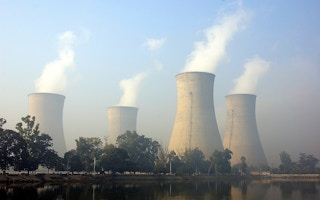Is carbon pricing a silver-bullet solution for solving the climate crisis? I call for a nuanced discussion around the unintended equity issues that carbon taxes will cause and examine “revenue recycling” as an option for designing carbon pricing policy. Revenue recycling comprises of the mechanisms through which the income generated from carbon taxation is ploughed back into society.
To continue reading, subscribe to Eco‑Business.
There's something for everyone. We offer a range of subscription plans.
- Access our stories and receive our Insights Weekly newsletter with the free EB Member plan.
- Unlock unlimited access to our content and archive with EB Circle.
- Publish your content with EB Premium.
Basically, carbon pricing encourages emissions reduction by taxing the carbon content of goods and services. The more emissions-intensive a commodity, the more expensive it becomes. As a result, fewer consumers use it, turning to low-carbon alternatives. The demand for greener technologies then encourages innovation.
At the same time, carbon pricing works as a type of indirect tax, which is inherently distortionary as it impacts various income groups differently. For example, carbon pricing would first impact energy prices, affecting poor households who spend a larger part of their income on energy more than the rich. Herein lies the equity issue.
One of the other aims of carbon pricing is to supplement government revenue so that the government doesn’t have to choose between promoting investment in alternative technologies on the one hand and undertaking inequality/poverty-reduction programmes on the other. Herein lies the policy question.
Theoretically, carbon prices alone are capable of incentivising the private sector to invest in innovation and the deployment of green alternatives. However, experience shows that, in the absence of complementary non-market policies, they enable the efficient use of established technologies rather than incentivising innovation or transformative changes in the system.
For example, German subsidies encouraged the development of its renewable energy capacity, which was then made more competitive by carbon pricing, thereby enabling the decarbonisation of its power grid. Similarly, the European Union Emissions Trading Scheme has encouraged a large-scale shift from coal to natural gas. But both have done little to promote innovation in other low-carbon technologies such as battery storage and green hydrogen.
Thus, governments must make an additional effort to incentivise systems transformation. One option is to direct the revenue raised through carbon pricing to activities that can enable a low-carbon transition, such as R&D in low-carbon technologies and schemes that reduce their cost, to ease supply constraints and improve accessibility.
However, low-carbon transformation requires time. Alternatives will not magically become affordable while simultaneously improving living standards and reducing emissions. For example, efficient electric stoves will not automatically become affordable for poor households even if electricity is somehow made accessible to all.
This is where revenue recycling comes in. Carbon pricing, in conjunction with non-market interventions, will eventually deliver affordable and accessible technology alternatives, but in the meantime, the poorer sections of society will be disproportionately affected by higher prices. To deal with this, carbon-pricing revenue can be distributed among the worst-affected sections of society. That way, industries would be incentivised to switch to less emissions-intensive technologies, while end consumers would be relatively unaffected as higher prices are offset by rebates from this revenue-recycling mechanism.
But this is easier said than done. Governments must identify the most vulnerable populations and ensure a channel to transfer such revenue to them. India has experience in administering indirect carbon pricing and numerous schemes (e.g., the public distribution system) that provide money and access to essentials for low-income families. By strengthening institutions that enable these schemes, some of the difficulties in implementing revenue recycling can be managed.
However, strengthening these institutions also requires money, which could potentially create more competition for limited government funds. Also, if carbon-price revenue is recycled this way, there might be less available to invest in making low-carbon alternatives affordable and accessible, as happened with India’s coal cess. When India started imposing a coal cess of Rs 50 per tonne on domestic and imported coal in 2010, the money was expected to go towards a national clean energy and environment fund. instead, it was used to repay state governments to compensate them for lost revenues under a new goods and services tax regime, leaving very little to invest in clean energy projects.
With all these competing demands, carbon pricing could be a way to ensure an additional stable revenue stream that comes with no strings attached. This is especially true given the uncertainty around climate finance coming in from developed countries and the fact that almost all of it is in the form of loans, which imposes an additional monetary burden on developing countries.











